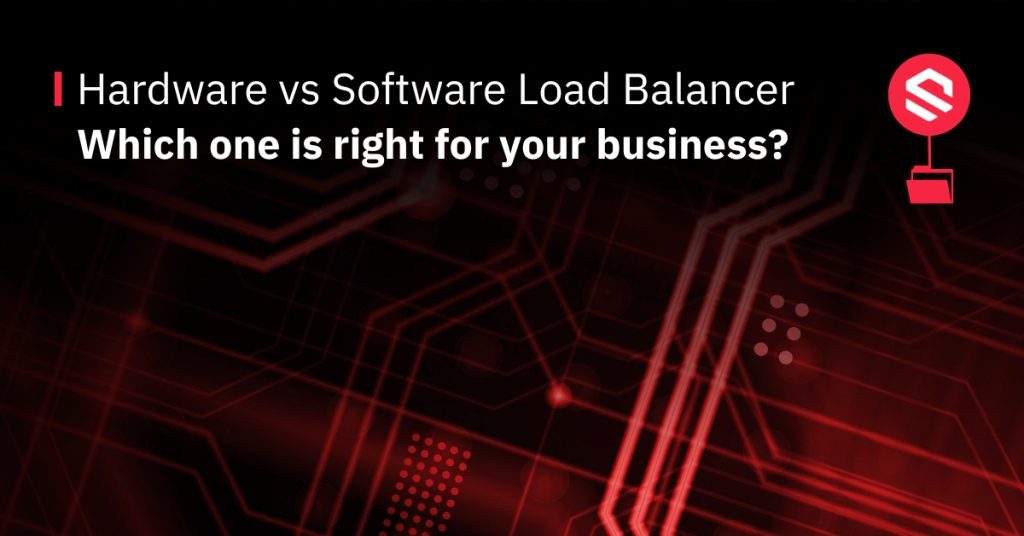Load balancers play a critical role in ensuring seamless network traffic distribution, improving the reliability and performance of digital infrastructures. But how do you choose between a hardware load balancer and a software load balancer? In this article, we’ll break down the key differences, benefits, and use cases to help you decide which solution fits your needs.
Hardware Load Balancer
What Is a Hardware Load Balancer?
A hardware load balancer is a physical device designed specifically to manage network traffic. It acts as an intermediary between client requests and backend servers, efficiently distributing workloads to optimize performance and reliability.
Key Features
- Optimized Performance: Purpose-built for high-speed processing, it excels in managing large volumes of traffic.
- Reliability: Robust hardware ensures uptime and durability in mission-critical environments.
Common Use Cases
Hardware load balancers are often deployed in enterprises where performance, security, and reliability are paramount. Examples include:
- E-commerce platforms: Ensuring a smooth shopping experience for high numbers of simultaneous users.
- Banking and financial applications: Maintaining stable and secure operations for sensitive data.
- Critical services: Supporting healthcare or government platforms where downtime is unacceptable.
When to Choose a Hardware Load Balancer
Consider a hardware load balancer if your organization handles sensitive data, requires high performance, or cannot tolerate service disruptions. These devices provide unmatched stability, especially in large-scale environments.
Software Load Balancer
What Is a Software Load Balancer?
A software load balancer is a flexible application that runs on standard hardware to manage network traffic. Unlike its hardware counterpart, it relies on virtualization and cloud-based technologies to provide load balancing capabilities.
Key Features
- Flexibility: Easily adapts to varying traffic volumes and integrates seamlessly with virtualized and cloud environments.
- Cost-Effectiveness: Operates on existing hardware, significantly reducing upfront investment.
Common Use Cases
Software load balancers are ideal for businesses that prioritize scalability and cost savings. Examples include:
- Startups and growing businesses: Supporting dynamic traffic patterns without major infrastructure investments.
- Development and testing environments: Enabling agile development processes.
- Organizations with fluctuating workloads: Scaling up or down effortlessly to meet changing demands.
When to Choose a Software Load Balancer
If your organization needs an adaptable, cost-effective solution that can grow with you, a software load balancer is the ideal choice. Its simplicity and flexibility make it perfect for modern, evolving infrastructures.
Hardware vs. Software: A Comparison
| Feature | Hardware Load Balancer | Software Load Balancer |
|---|---|---|
| Performance | Optimized for high traffic volumes. | Scalable to adapt to traffic spikes. |
| Cost | Higher upfront investment. | Lower initial cost. |
| Flexibility | Fixed capabilities. | Highly adaptable to changes. |
| Maintenance | Requires physical management. | Easier to update and scale. |
| Use Cases | Critical applications with stable traffic. | Dynamic, growing, or cloud-based setups. |
Choosing the right load balancer depends on your organization’s specific needs. For static, high-performance environments, hardware may be the best fit. For adaptable and cost-conscious solutions, software load balancers are ideal.
SKUDONET Load Balancer Solutions
At SKUDONET, we understand that every business has unique needs. That’s why we offer a comprehensive suite of load balancing solutions designed for reliability, scalability, and advanced security.
Our Solutions
- SVA10000 Virtual Appliance Load Balancer : A software-based solution tailored for virtualized environments, ensuring seamless integration with existing virtual machines.
- SBA10000 Bare Metal Appliance Load Balancer : Ideal for organizations with their own hardware infrastructure, this solution provides powerful load balancing capabilities.
- Hardware Load Balancer : A turnkey solution with SKUDONET pre-installed on high-performance physical hardware, delivering exceptional stability and performance.
SKUDONET combines the flexibility of open-source technology with enterprise-grade features to deliver unparalleled performance, whether you choose a hardware or software platform.
Selecting the right load balancer comes down to understanding your specific requirements. Whether you prioritize the robust stability of hardware or the adaptability of software, SKUDONET has a solution tailored to your needs.
Ready to optimize your infrastructure? Try SKUDONET Enterprise Edition for free with our 30-day fully functional trial and experience the difference firsthand.


